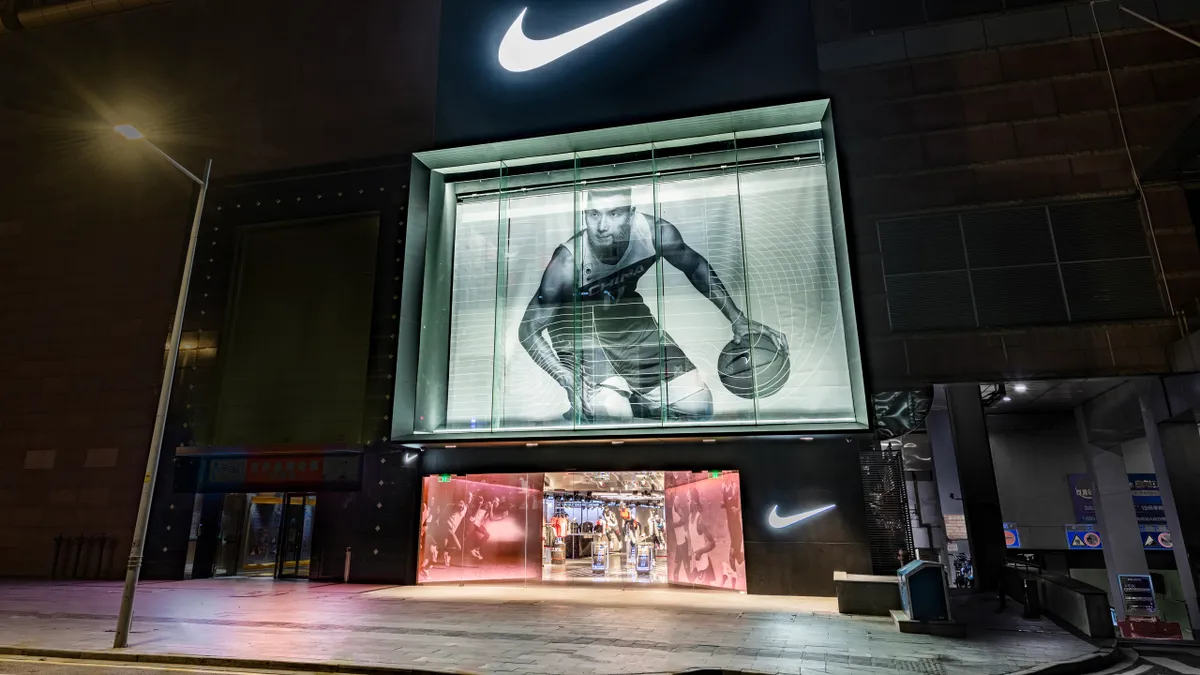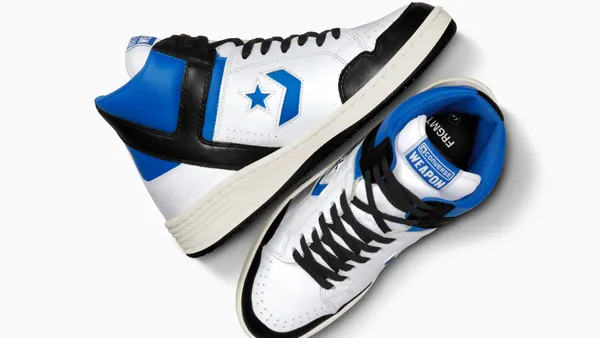Dive Brief:
- Nike broke $50 billion in 2022, with revenues up 10% for the year to $51.2 billion, but net income fell 16% to $5.1 billion, according to a Thursday earnings report. Fourth quarter net income tumbled 28%.
- As Nike returns to some wholesale retailers it previously pulled back from, DTC grew to $21.3 billion of Nike’s revenue for the year, an increase of 14%. Wholesale was up 7% for the year.
- Greater China, which has been a challenging geography for Nike lately, returned to double digit growth, with sales up 16% in the region in Q4.
Dive Insight:
Nike’s recent decision to establish new partnerships with DSW and Macy’s, two partners the brand had previously shunned, seemed to run counter to much of Nike’s direct-to-consumer focus of the past few years.
CEO John Donahoe addressed the shift on a call with analysts, saying the retailer is “always actively managing our marketplace to serve consumers” and sees large multi-brand retailers as beneficial due to their scale. He also said the recent decisions do not run against its overarching strategy.
“Our marketplace strategy remains the same as it’s been over the last several years. This is simply a continued evolution of the very same marketplace strategy,” Donahoe said. “We have accounts that help us serve distinct segments of consumers or price points. And so what we’ve done over the past quarter is simply an extension of that. Our direct business will continue to grow the fastest, but we’ll continue to expand our marketplace strategy to enable access to as many consumers as possible and drive growth.”
To several analysts, though, the stronger return to wholesale is due to the athletic giant’s high levels of inventory and inability to clear it. GlobalData Managing Director Neil Saunders said in emailed comments that while inventory is relatively flat year over year, it’s up 23% over 2021. And with wholesale posting softer sales, Nike can’t make up the difference on its own.
“This is one of the reasons Nike is starting to take a more sympathetic view to third-party retailers after spending a long time pulling back to focus on direct retail,” Saunders said. “Basically, the company knows it needs to maximize the number of doors it sells through in order to protect volumes and not lose certain customer segments who do not shop direct. This applies especially to apparel where brand loyalty isn’t as strong as it is for sneakers.”
Simeon Siegel, a BMO Capital Markets analyst, also noted that margins in every region “moved against DTC penetration, leading us to keep fearing that Direct hurts, not helps, margin.”














